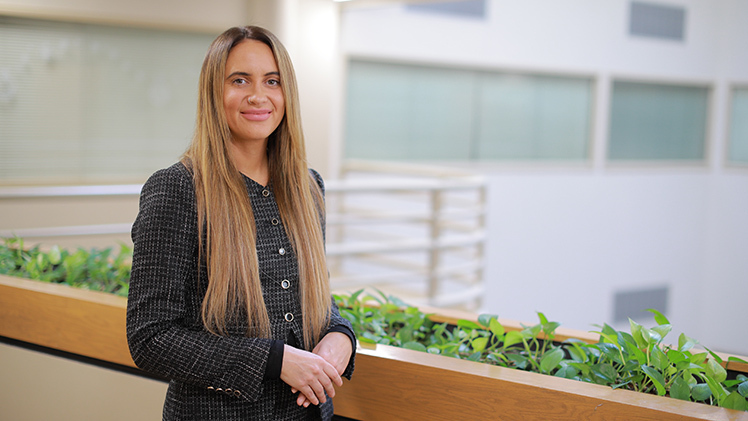The coronavirus pandemic exposed the fragility of global supply chains in a harsh lesson that businesses and consumers alike are not soon to forget.
With the most acute effects now in the rearview window, it’s also given rise to a new area of research attention: Why were some businesses able to quickly adapt and overcome ruptures in the supply chain, while others struggled and never recovered? In short, what makes an organization resilient?

Dr. Elizabeth Napier, an assistant professor in the Department of Marketing, explored how organizations can withstand, adapt and thrive in the face of unprecedented challenges in research published this month in the Journal of Business Research.
Dr. Elizabeth Napier, an assistant professor in the Department of Marketing and International Business in the John B. and Lillian E. Neff College of Business and Innovation, explores the question in research published this month in the Journal of Business Research.
In her article titled “Adaptive Strength: Unveiling a Multilevel Dynamic Process Model for Organizational Resilience,” she and her collaborators present a framework for how organizations can withstand, adapt and thrive in the face of unprecedented disruptions like political upheavals, economic downturns, technological advancements and global pandemics.
But first, Napier said, they had to start with the basics: What even is resilience?
“Resilience has been heavily researched in psychology and sociology, but it is fairly new to the business literature in exploring what makes a firm resilient,” she said. “It’s also somewhat of a fuzzy construct, in that how you define it depends on the context.”
Napier, Dr. Steven Y.H. Liu of Michigan’s Oakland University and Dr. Jingting Liu of the University of Colorado Denver opted to explore resilience in the context of multinational enterprises, leaning on recently published research to generally frame resilience as the resources and capabilities on which an organization relies to bounce back from adversity, as well as the process involved in doing so.
Their theoretical article goes on to analyze sources of adversity, resources and capabilities for multinational organizations, and synthesize their findings into a multilevel process model. It’s a tool to guide holistic considerations of resilience, starting with employee well-being and other factors at the individual level and continuing all the way up to the strategic decisions made by executives in the C-suite. It also notably addresses what they call the ecosystem level, in which they assess the relationship between resiliency and corporate social responsibility.
“Organizations that invest in sustainability, particularly the sustainable development goals adopted by the U.N. in 2015, coincide with more resilient organizations,” said Napier, for whom corporate social responsibility is a particular area of interest. She’s previously published research on the topic.
The authors conclude by laying out the real-world value of their work, suggesting that business managers can use their process model to strategically plan, execute and evaluate resilience.
“The pandemic wasn’t the last major disruption we’ll see,” Napier said. “Our research offers valuable insights into how organizations can navigate future challenges, adapt to change and thrive in their respective industries.”